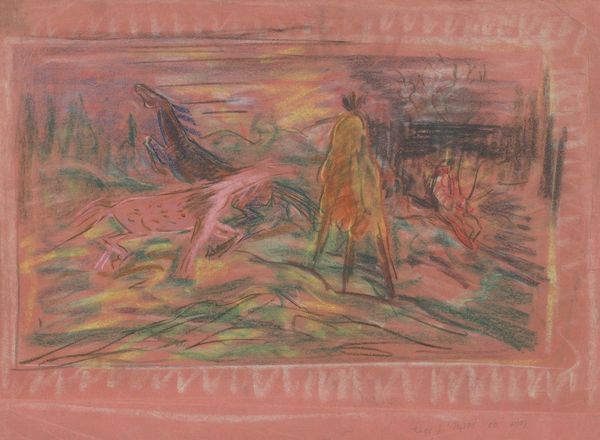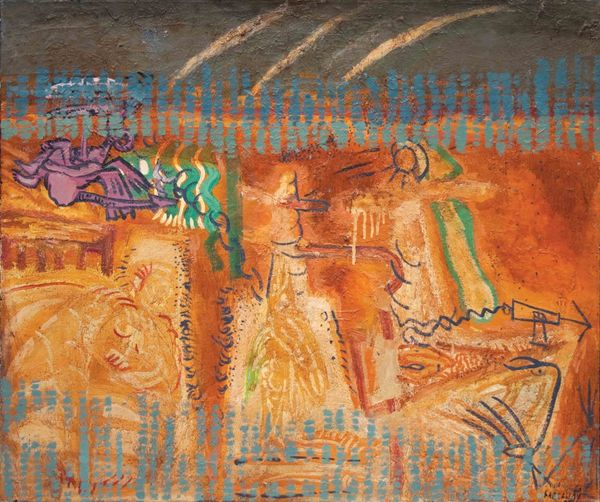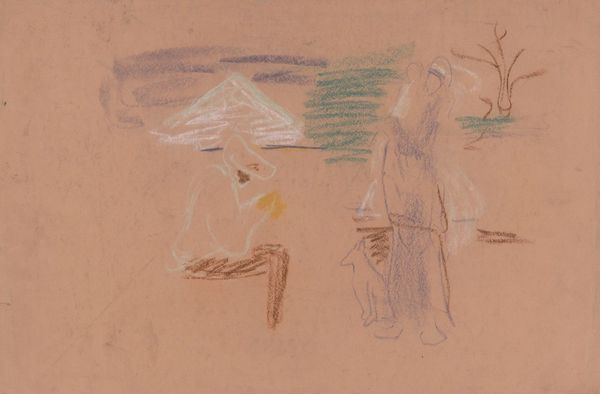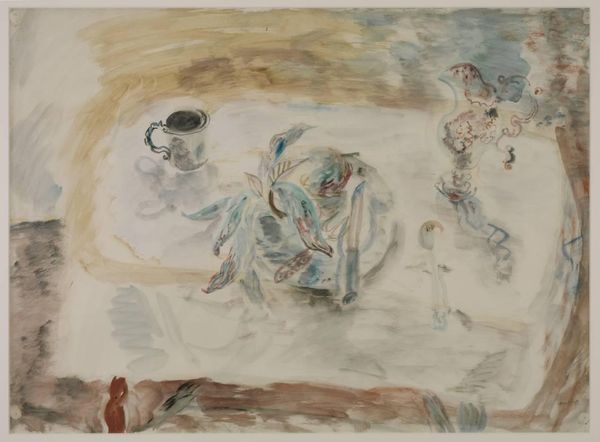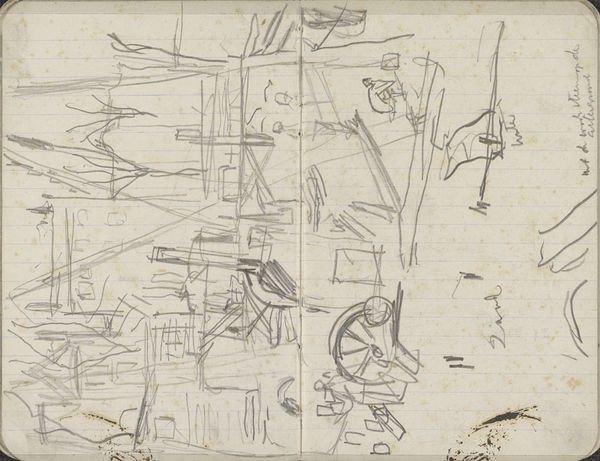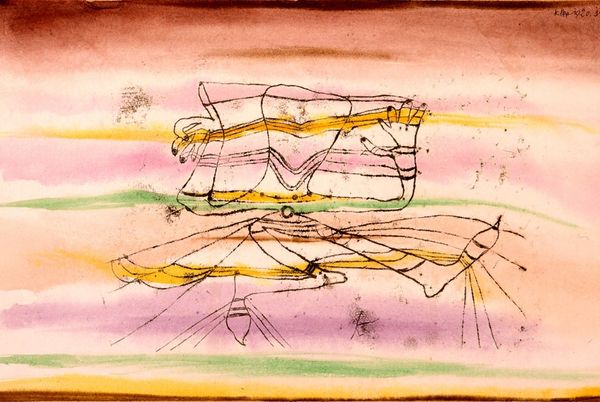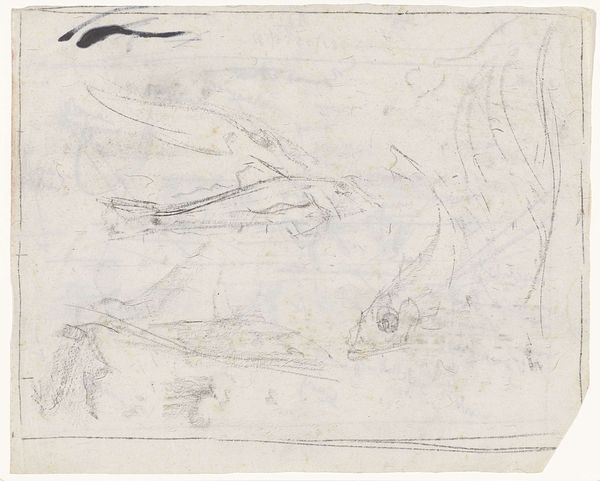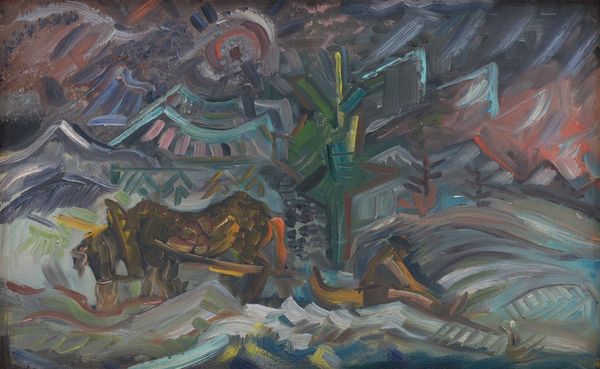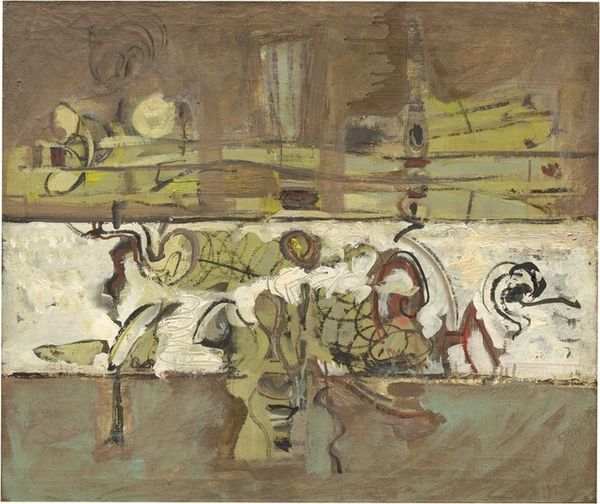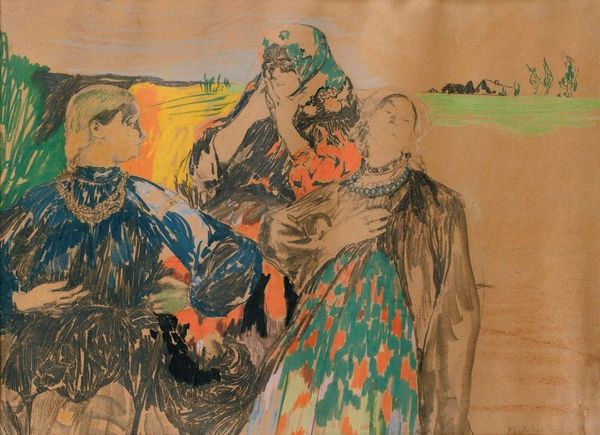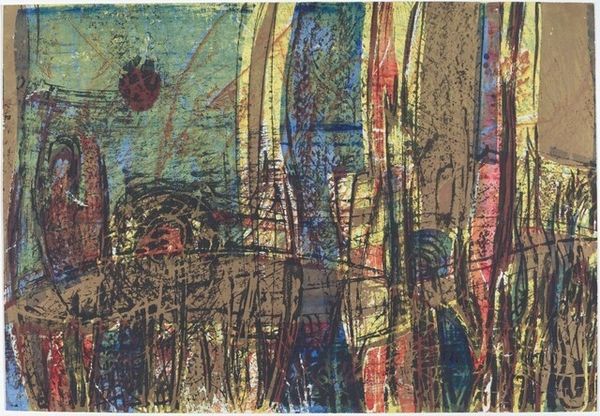
Copyright: Public Domain: Artvee
Editor: This mixed-media drawing, “Desire,” by Arnold Peter Weisz-Kubínčan, made sometime in the 1940s, has a really dreamy quality to it, almost like looking at a faded memory. There's a very definite landscape in soft, muted tones, and figures are suggested, not fully defined. What are your thoughts on this work? Curator: It's fascinating how Kubínčan uses readily available materials, probably scraps he had around, given the turbulent 1940s context, with that paper tear indicating its own history and materiality. The mixed-media approach itself – drawing, pastel, watercolor, maybe even frottage – suggests a resourceful approach, turning inexpensive, accessible tools into the means of production. Do you notice how that challenges notions of high art needing expensive, permanent materials? Editor: I do! The use of such humble materials contrasts so strongly with the romantic and erotic subject matter implied by the title, and figures, almost like a clash of the ideal and real. Curator: Precisely. It speaks to how artistic expression perseveres even amidst material constraints and challenges traditional distinctions. Instead of solely admiring aesthetic representation, we look at the very stuff that constructs the work and its meaning within society. Is there perhaps a narrative that one can imagine based solely on those grounds? Editor: Thinking about it that way… I imagine an artist actively resisting limitations through their choice of accessible means! Thanks. Seeing it from this material-focused view opens up many new pathways to its possible intent and background. Curator: Absolutely! Understanding artistic practices through material examination provides a ground for looking at culture as a whole.
Comments
No comments
Be the first to comment and join the conversation on the ultimate creative platform.
